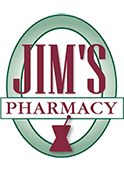© 2020-2021 Jim's Pharmacy & Home Health | All Rights Reserved
Our billing specialists Ginger and Shelly have a combined total of over 50 years of experience working with insurance companies to make sure that you receive the benefits to which you are entitled. Whether it’s seeking prior authorization for services or fighting denials and audits, chances are we’ve done it before and we can do it again!

We work with most major insurers, including:
If your insurance plan isn’t on the list, we’ll make sure that you get a receipt with all pertinent information so that you can send in a claim yourself.
In order to bill insurance for any service, you will need to provide a prescription from your health care provider, as well as your current insurance card(s). As always when dealing with insurance companies, confirmation of eligibility and benefits is never a guarantee of payment, which is subject to the terms and conditions of your plan, including deductible accumulation, at the time of service.
How Does Insurance Work?
For many of us, the first time we learn how insurance works is the day we get an unexpected bill in the mail, sometimes for hundreds of dollars. Nobody wants that kind of an education! Here are some basic definitions and examples, but bear in mind that the only way to know for sure the details of your insurance plan is to read all of the materials they provide you and to call their customer service number and ask when you have questions.
Most insurance plans have three different ways of sharing costs with you:
1. Deductible – This is the amount that you have to pay for your own medical care before your insurance plan pays anything. The deductible amount resets every year, regardless of whether you met it or not the year before. Medicare Part B has a deductible of around $185, and not every Medicare supplement plan covers that deductible. This means that if you rent a piece of equipment, you could see a bill show up for it in January, even if you haven’t had to pay for it yourself before then. Some services (usually preventative ones, like an annual doctor’s visit) are not subject to your deductible, depending on your plan.
2. Coinsurance – Once you meet your deductible, your insurance plan usually doesn’t pay the full amount they have contracted with us for items and services. Instead, they pay a percentage of it, and you pay the rest. The percentage that you have to pay is called your “coinsurance,” and we might refer to it as a copay (although a copay is usually a set dollar amount rather than a percentage). For example, Medicare Part B pays 80% of their contracted rate, with a 20% coinsurance amount due from the patient (which is why people get Medicare supplement plans, to cover some or all of that 20% coinsurance).
3. Out of Pocket Maximum or Stop/Loss Amount – This is the maximum amount that you will have to pay for covered medical care during a calendar year. Not every plan has an out of pocket maximum. Medicare Part B does not have an out of pocket maximum, so you will have to pay the 20% coinsurance for every single item or service you receive, unless you have another insurance that will cover it for you.

424 East Second Street
Port Angeles, WA 98362
(360) 452-4200